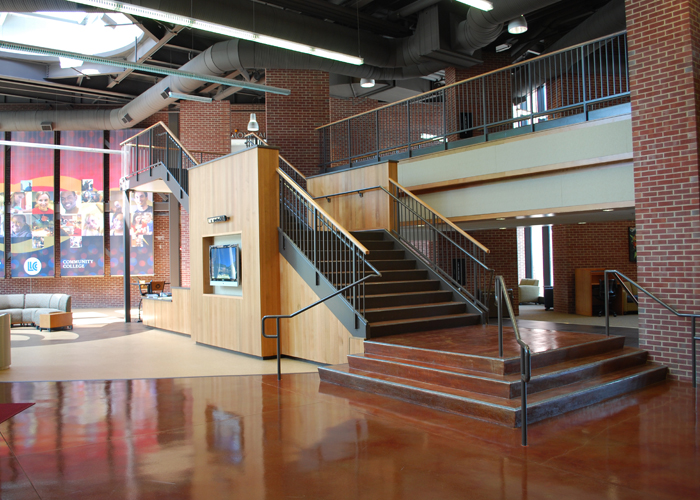Music rooms revamped to be sound treated
March 19, 2018
SPRINGFIELD –The noise today should make it quieter tomorrow in Menard Hall.
Visitors to the second floor of Menard Hall likely have noticed the work being done to the music practice rooms. Since the end of the Fall 2017 semester, the construction class at Lincoln Land has been working to “treat” the rooms with various materials to “turn the rooms down,” said Jason Waddell, associate professor of music.
While it is nice to hear the music students singing and playing instruments, it isn’t always the best situation for other students and teachers, or even the performers themselves.
“I was teaching in room 2248 by the stairway, and they used to have snare drum practice in the room across the hall,” said Deborah Brothers, professor of English.
Brothers continued, “And I mean it was just like you couldn’t even …” She paused and threw her arms up and laughed.
The workers have inserted 4-inch-thick acoustic foam for sound insulation, Waddell said. Its purpose is to slow down the sound and keep it inside of the practice room.
“If light or water can get through, sound will, too,” Waddell said.
There has also been mass vinyl added that works as a reflective surface. By using this material, the sound will bounce back into the room instead of seeping into the hallway, Waddell explained.
Waddell also stated that they have inserted “little cavities into the walls so the sound can get in there and kind of get trapped.” This allows the musician to practice at a higher volume and not disturb those around them.
The sound treatment is also a good thing for the musicians.
“It’s a dual purpose because if you’re in there playing piano and you’re hearing a lot of outside noise, it’s distracting,” said music student Jay Lammers.
Waddell expressed that progress is already being made.
“So we measured the rooms, and we’ve already got them, without doing anything to the doors, yet, turned down about 20 to 25 decibels just by doing the walls,” Waddell said.
Waddell has used a field recorder and the DB app to measure the decibels in the room. A decibel is a unit used to express the intensity of a sound wave.
A 20-decibel drop, according to the Occupational Safety and Health Administration, would be the difference between the sound of a train running 100 feet away and being in a conversation.
Waddell said it is just “treating” the room, not “proofing” it because they can’t eliminate all of the sounds. Crews will eventually replace the doors, lowering the sound even more, but the ceilings and floors cannot be “treated” because of asbestos.
Matt Mifflin can be reached at [email protected].
